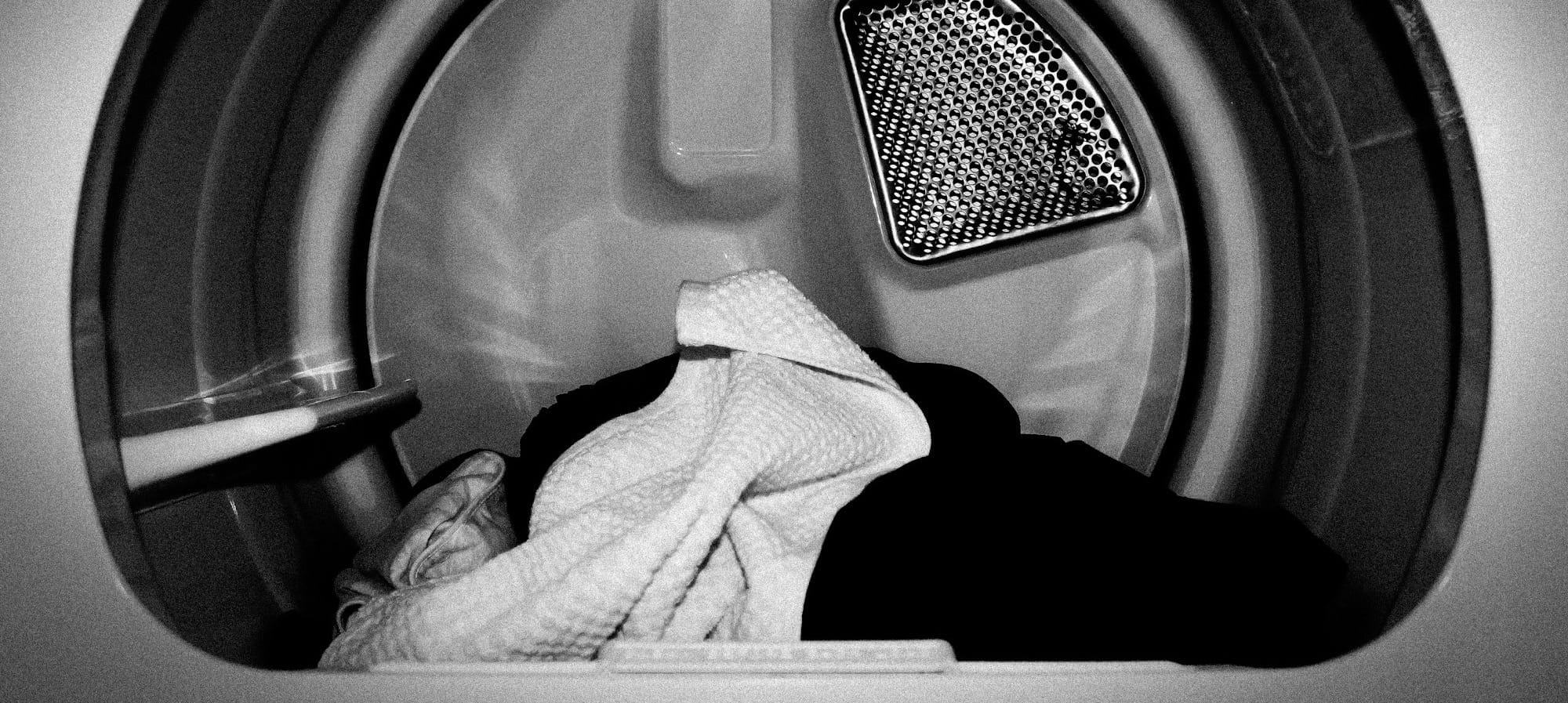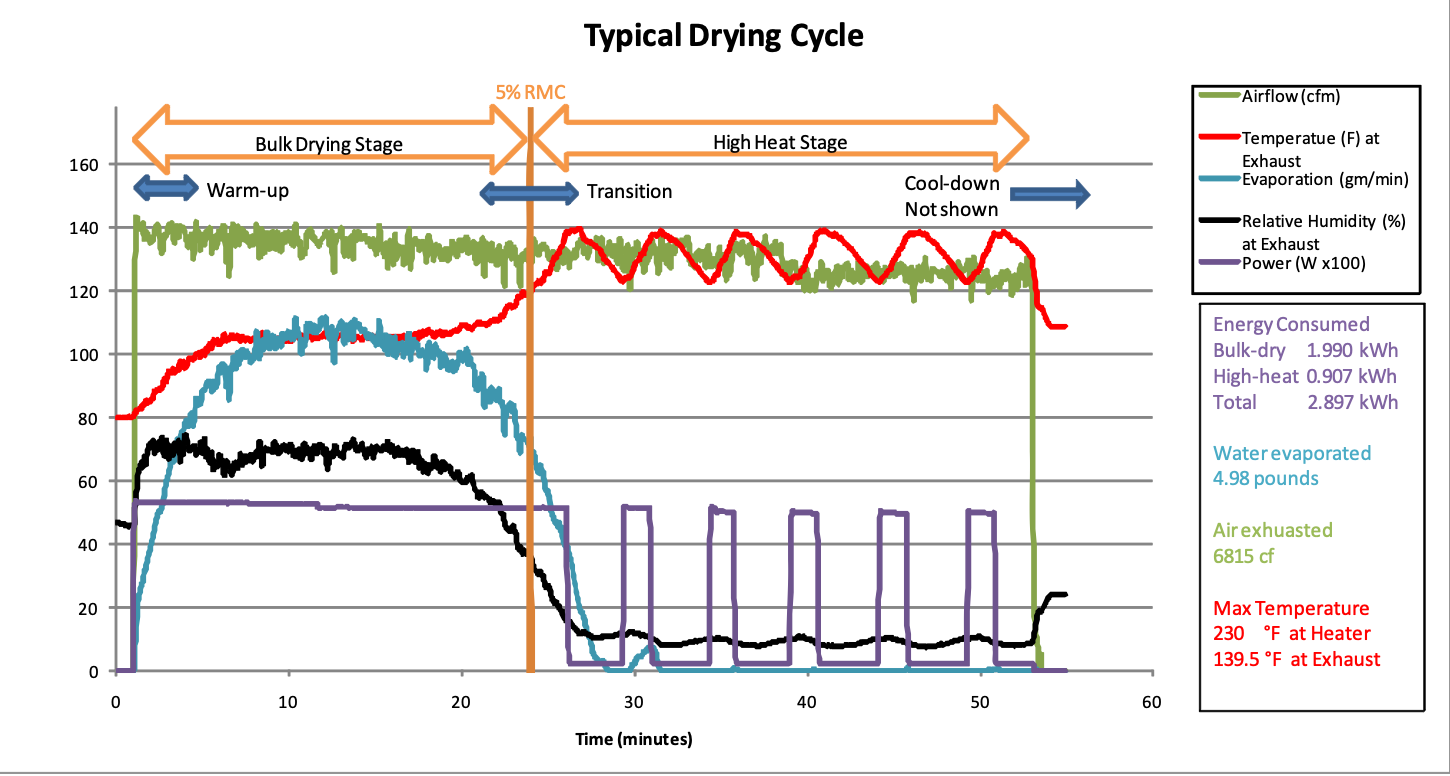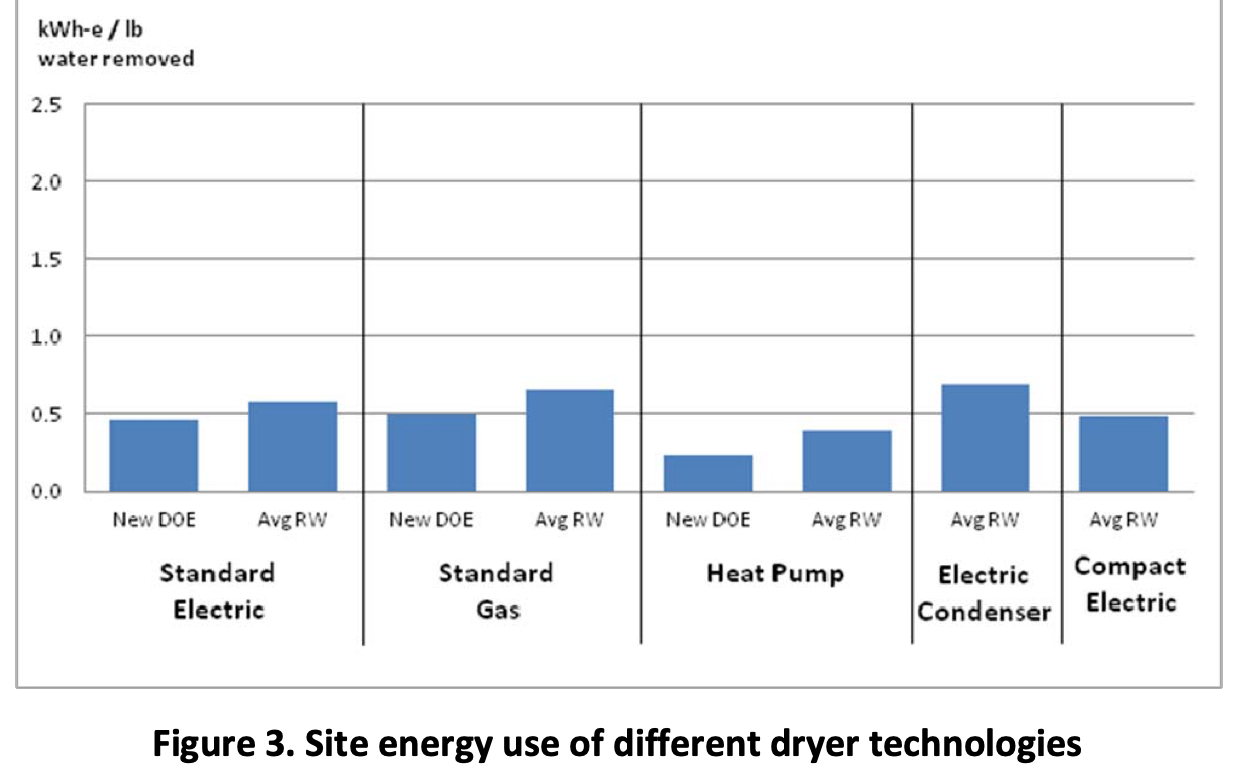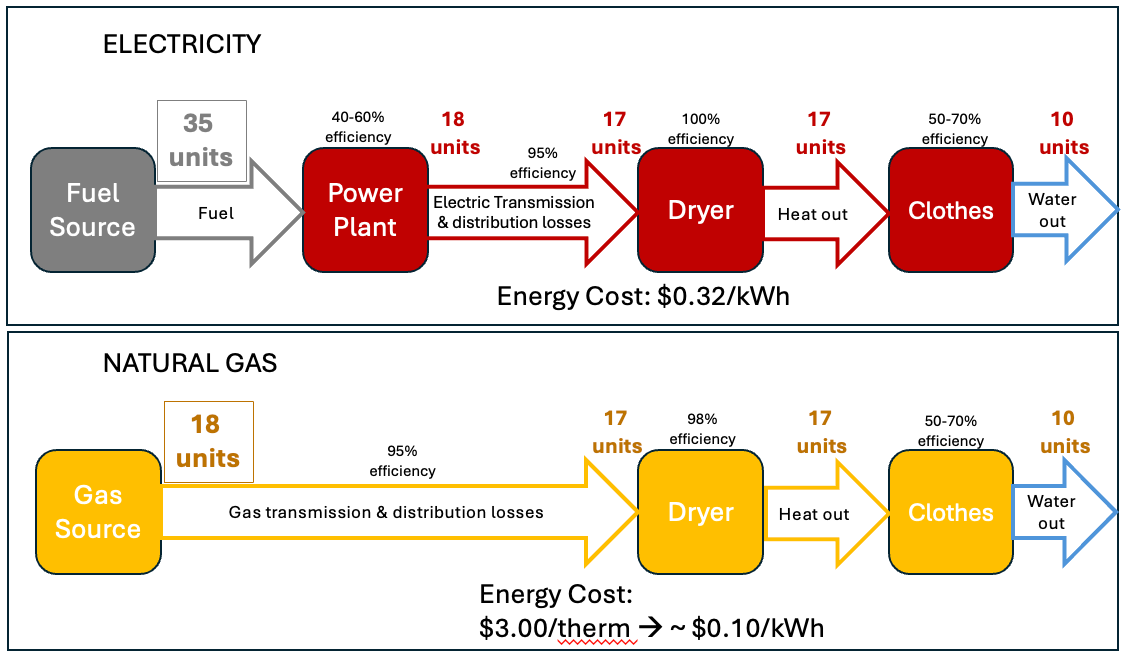Gas or Electric Dryer? Which is better?
Energy Consumption and Cost of Electric vs. Natural Gas Clothes Dryers

A typical U.S. clothes dryer consumes a fair amount of energy, about 3-4% of a household’s total energy use according to the Department of Energy – making it one of the bigger energy-consuming appliances in households. On average, an electric clothes dryer uses between 1.5 to 6 kilowatt-hours (kWh) of electricity per load. A gas dryer uses about the same total energy, including electricity to run the motor (~ 0.3kWh) and gas (4,000 to 20,000 British Thermal Units, BTUs) to dry the clothes. The exact energy consumption depends on factors such as the dryer's age, model, and efficiency rating - but most importantly on what you are drying1.
Clothes Dryer Energy Efficiency - Electric vs Natural Gas
I was surprised at how many poor, anecdotal, and outright wrong sources of information there are comparing gas and electric dryer efficiency. Traditional gas and electric dryers are similarly efficient in drying clothes - but not in operating cost or environmental impact; and there’s other more important factors to consider (more on that below).
Getting back to basics, a clothes dryer’s job is to dry clothes by evaporating the water in them. Evaporating water takes energy - about 0.64 kWh per quart (~2 pounds) of water. Conventional gas and electric clothes dryers are 50-70% efficient, meaning that up to half of the energy they use is wasted, heating the metal in the machine, the hot air exhausted outdoors, etc. This is particularly true if the dryer over-dries the clothes, as that energy is completely wasted. Below is a graph from the American Council for an Energy Efficient Economy (ACEEE) showing the typical dryer cycle - nearly 1/2 of the dryer cycle and 1 kWh can be spent after the clothes are dry (High Heat Stage)!

The Natural Resources Defense Council (NRDC) showed that as of 2011 (I couldn’t find more recent reliable data), traditional gas and electric dryers had similar efficiencies, using both Department of Energy (DOE) tests and “Real World” (RW) tests using bulkier clothing.

Based on these reports, the bigger factors to consider with dryer efficiency were related to differences between individual models rather than gas vs electric; you could also consider heat pump dryers. To pick the most efficient:
Choose EnergyStar certified dryers - Clothes dryers that are EnergyStar certified use 20% less energy. Alternatively, ConsumerReports rates “eco-friendly” dryers on their site based on factors like energy use and drying performance.
Look for dryers with automatic moisture sensors - These types of cycles help reduce the energy-wasting high-heat stage by detecting when the water has been removed from the clothes and shutting off.
Heat Pump dryers are most efficient - More manufacturers are now making heat pump dryers, which can be much more efficient than either traditional gas or electric dryers, but they come with tradeoffs.
Clothes Dryer Cost of Operation - Electric vs Natural Gas
The cost of operating a dryer varies based on local electricity and natural gas rates. Since electricity and gas bill for energy differently, and because gas dryers also use electricity, it can be difficult to compare costs on an apples-to-apples basis.
Converting natural gas energy units (and costs) to kWh can help:
- From this table, 1 therm of natural gas = 29.3 kWh
- In my area, 1 therm of gas costs about $3
- Converting therms to kWh of gas = 3 / 29.3 = $0.10 / kWh.
Now, let’s compare this cost to electric rates:
- In my area, the lowest electricity time-of-use rate is $0.31 / kWh - over 3 times the natural gas equivalent!
- However, I have rooftop solar - my cost can be zero if I run an electric dryer during the sunniest part of the day. (Not taking into account the cost and size of the solar panels - that’s for another article - but it’s still cheaper than gas.)
In most areas of the US the cost for natural gas per kWh of energy is less than for electricity - unless you have rooftop solar - which means you’ll spend less in operating costs for a gas dryer than for an electric one.
Environmental Impacts of Electric vs Natural Gas Clothes Dryers
To understand the environmental impacts of a gas vs electric dryer, we have to understand how electricity is made. Electricity is generated by converting from another source of energy - in the US these sources are a mix of Natural Gas, Coal, Nuclear, Hydrothermal, Wind and Solar. However, these conversions aren’t 100% efficient - some of the energy is lost along the way.
Here’s a graphical depiction showing this “primary source” energy use through to the dryer and your clothes:

If all electricity were produced by solar (ie, “fuel source” equals the sun) - for example from your rooftop - an electric dryer would have the lowest environmental impact. However, if over 1/2 of the electricity in your area is produced by burning natural gas (ie, the “fuel source” is the same as for a gas dryer), then a gas dryer is likely to have a lower environmental impact - at least until the electric grid becomes more ‘green’.
Saving Money - Primary Factors Affecting Clothes Dryer Operating Costs
There are other factors under your control that influence the cost of operating a clothes dryer. In order of impact from highest to lowest:
- Removing more water from the clothes before drying, for example, by using the highest spin speed on the washer.
- Drying full loads rather than a larger number of partial loads
- Using a lower heat setting to reduce the energy spent heating air, cloth, and metal. The clothes get just as dry, though drying time may be longer (This wears out clothes less, too.)
- Using the “less dry” setting. (Most dryers have a “dryness” control independent of the temperature setting. The “less dry” setting usually gets clothes fully dry, while “normal” and “more dry” use more time and energy. The “damp dry” setting usually leaves noticeable moisture in the clothes.)
Lastly, drying your clothes outside on a line or drying rack costs nothing! And is environmentally friendly. Everywhere else outside the US, this is the most common way clothes are dried.

Electric Clothes Dryer Hookups
Electric clothes dryers generally operate on a 240-volt circuit, drawing a maximum current of around 30 amps. This high current requirement necessitates a dedicated circuit to the dryer location. The combination of high voltage and current allows the dryer to generate the substantial heat needed to effectively dry clothes in a reasonable timeframe.
Gas Clothes Dryer Hookups
Natural gas clothes dryers generally operate on a standard 120-volt outlet and a natural gas hookup. The electric connection powers the motor, fan and timer/electronics and the gas is burned in a burner to generate the substantial heat needed to dry clothes in a reasonable timeframe. Both gas and electric dryers are vented to the outdoors, but with gas this is especially important due to the exhaust gases created by burning gas.
Conclusion
Both electric and gas clothes dryers are common and convenient, with similar energy consumption. However, operating costs can vary substantially depending on your energy rates. Electric dryers that can take advantage of solar are cheaper to operate and generate less pollution and carbon than gas. Without solar, in most parts of the country gas dryers will have the operating cost advantage. In general, more efficient clothes dryers of either type, such as EnergyStar rated, can pay back the increased purchase prices with operating savings over their lifetime.
